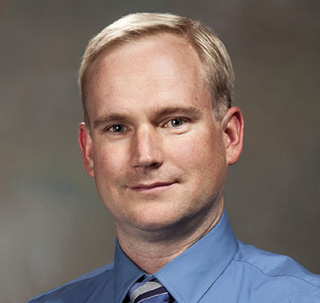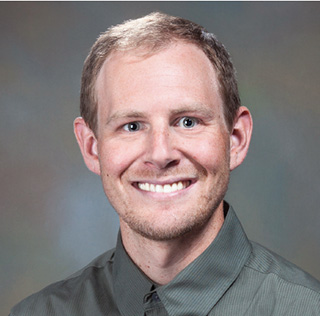IEEE Albuquerque Section honors two Sandians
When Derek Lamppa (5445) was 9 he was convinced he could fix his mother’s dead hairdryer. He ended up only playing with the bits and bobs, perhaps predisposing him to his current career as an electrical engineer.
Similarly, Jay Johnson (6112) spent part of his childhood helping his sculptor father figure out how to assemble his massive sculptures, leading him to his career as a mechanical engineer.
Both Derek and Jay won the IEEE Albuquerque Section’s Outstanding Young Engineer award this May for their technical contributions at Sandia.
Making things work at the Z Machine
Derek was honored for his “engineering excellence and leadership in establishing the Systems Integration Test Facility and developing and testing novel systems that significantly impact all science programs on the Z Pulsed-Power Facility at Sandia National Laboratories” according to the citation.

Derek Lamppa
Derek grew up in Albuquerque and his father, Kerry Lamppa (5349), is also an electrical engineer at Sandia. Derek got his bachelor’s at New Mexico Institute of Mining and Technology and his master’s at the University of New Mexico through Sandia’s Tuition Assistance Program (TAP). He is working on his doctorate at UNM, also through TAP.
“The award is almost secondary to the fact that Ryan McBride (1688) was willing to write the nomination and track down the people to write the recommendations. I think I value that more than the award itself, because they put in the time to do that. I know the people I work with value what I contribute,” says Derek. “Winning the award is almost like the icing on the cake.”
Derek works on testing systems prior to integration into the Z machine. As he put it, the physicists know the requirements they need for their pulsed power experiments, and Derek’s team figures out how to make it happen. Two of the innovations Derek helped make happen are the gas puff Z-pinch system — a way to use a column of gas as Z’s target — and an applied magnetic field coil system — a way to magnetize and stabilize the hydrogen fuel for fusion experiments.
Derek’s advice for engineering students and interns is make sure they truly enjoy and retain what they’re learning now, as they are collecting the building blocks for their career. What they are learning will likely be relevant throughout their career, and they will be expected to be responsible for that knowledge.
A passion for photovoltaics
Jay was honored for his “extensive contributions to the field of photovoltaic system integration” according to the citation. He got his bachelor’s from the University of Missouri at Rolla, now the Missouri University of Science and Technology. He got his master’s at the Georgia Institute of Technology.

Jay Johnson
“Getting this award is a nice way to call attention to all the hard work that goes into developing photovoltaic codes and standards. These code-making efforts are very important to the industry, and it is done by a very small group of people working on very difficult technical problems. When you do a good job it’s almost seamless and nobody sees it from the outside world,” says Jay.
Jay has a passion for renewable energy, which is what drew him to his work in solar energy. Power swings from photovoltaic systems can cause voltage and other problems on the grid, but using inverters in sophisticated ways can smooth things out. Jay is involved in writing the rules and standards for using these advanced inverters. He was also involved in a project that tested smoothing and control algorithms in a real-world environment, the Mesa del Sol Aperture Center.
Jay’s advice for young engineers at Sandia is do good work and you’ll be able to “work your way into the role that best fits you. It’s nice; Sandia is very accommodating on those sorts of things.”As part of the Outstanding Young Engineer award, Jay will be giving a continuing education talk on his photovoltaic grid integration work. The talk will be held on Sept. 15 at the UNM campus.